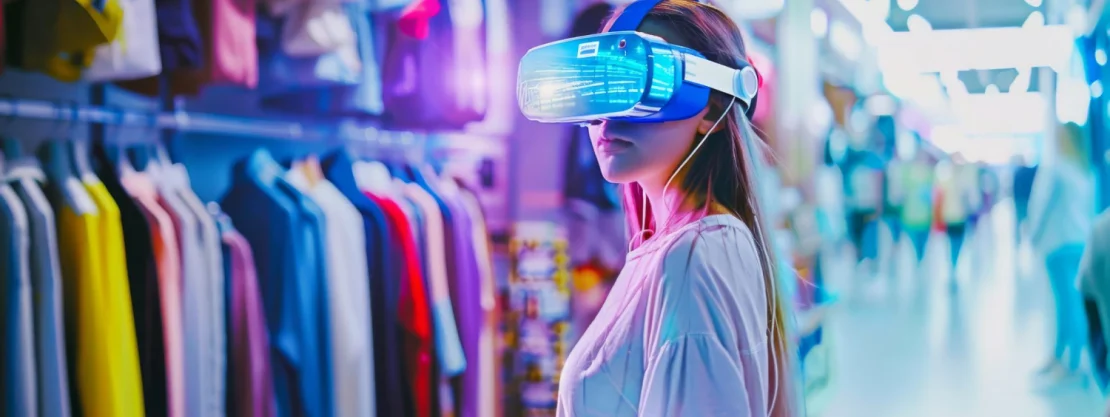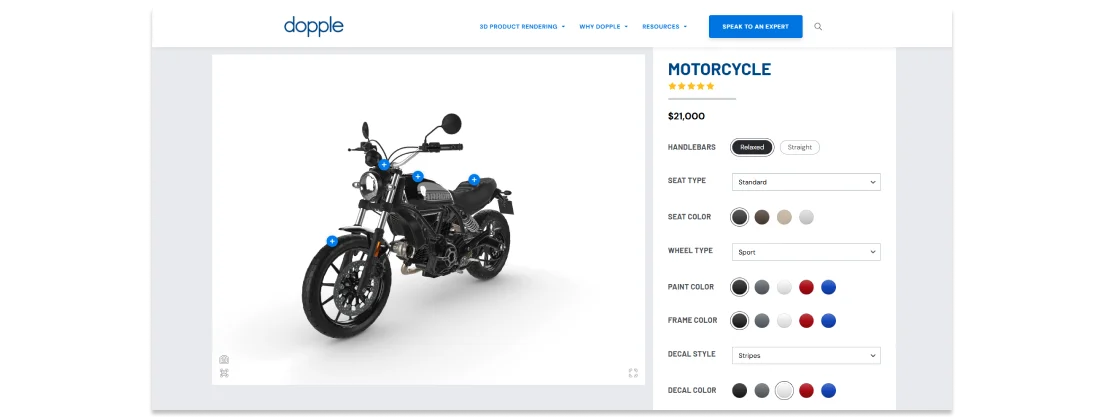
Returns are one of the biggest (and most expensive) pain points in eCommerce. In industries like apparel, home goods, and beauty, return rates can reach as high as 30% — and every return chips away at your bottom line. It’s not just about shipping costs or restocking fees. eCommerce Returns also impact inventory planning, customer satisfaction, and ultimately, your brand’s reputation.
Why do so many customers send things back? Most often, it’s because the product didn’t meet their expectations — the color was off, it didn’t fit right, or it looked different in person. That’s where augmented reality (AR) in eCommerce is changing the game.
AR gives online shoppers the ability to “try before they buy” — from virtually placing furniture in their living room to seeing how a pair of sunglasses looks on their face. It brings the in-store AR experience to the screen, helping shoppers feel more confident before they hit “add to cart.”
In this blog, we’ll explore how AR technology is helping eCommerce businesses lower return rates, enhance customer experience, and drive more confident purchasing decisions. We’ll break down top AR tools, real brand examples, and how your store can start using AR to reduce costly returns.
Why Customers Return Products (And Why It Matters)
One of the most common challenges in online shopping is the disconnect between what customers expect and what they actually receive. Unlike brick and mortar stores, online shoppers can’t touch, try on, or inspect a product before buying — which often leads to disappointment when the item arrives. That disappointment turns into a return.
Customers typically send items back for a few key reasons: they ordered the wrong size, received the wrong color, or the product simply didn’t match the description or images. In the eCommerce industry, especially in Apparel and fashion, the average returns are estimated to average around 16.9%, with a significant portion of those stemming from sizing and visual discrepancies.
Every return not only costs money in shipping and processing but also creates friction in the customer journey. Too many returns can erode trust in your brand, affect future sales, and complicate operations. That’s why solving this problem matters — and why forward-thinking brands are turning to augmented reality technology as a way to bridge the gap between expectation and reality.
How Augmented Reality Reduces Uncertainty
For most eCommerce shoppers, the biggest hesitation before clicking “buy” comes down to uncertainty. Will it fit? Will it match my space? Will it look the way I imagined? This uncertainty — especially in industries like fashion, accessories, furniture, and beauty — is what leads to high return rates and abandoned carts. Augmented reality offers a powerful solution to this challenge.
In online shopping, AR enables customers to interact with products in a more immersive way. Think virtual try-ons for clothing, sunglasses, or makeup; 3D previews that let customers rotate, zoom, and inspect a product from every angle; or room visualizers that allow users to see how a piece of furniture would look in their own environment using their mobile devices.
By closing the “touch-and-feel” gap, AR brings the in-store shopping experience online. It helps shoppers make more informed purchase decisions, which reduces returns and improves customer engagement.

Sephora’s Virtual Artist lets customers try on makeup virtually
The Impact of AR on Return Rates
Augmented reality isn’t just about making your site look modern — it’s a tool that helps shoppers make more confident purchase decisions. When customers can virtually try on a product or preview it in their home, they’re far less likely to be surprised when it arrives. That means fewer returns and better customer reviews.
For retailers, this confidence is critical. Return rates in industries like fashion, eyewear, and home goods are often driven by the gap between what shoppers expect and what they receive. AR helps close that gap by giving shoppers a better understanding of size, color, fit, and placement before they click “buy.”
And the results go beyond fewer returns — some retailers have even seen up to a 94% increase in conversion rates compared to their non-AR equivalents. That’s a massive performance boost for brands willing to embrace immersive, customer-first experiences.
In short, better visualization leads to better decisions. When customers feel confident in their order, they’re more likely to convert — and far less likely to send it back.
Getting Started: Implementing AR in Your Store
Adding AR features to your eCommerce platform is more doable than you think. Platforms like Shopify AR offer built-in support for 3D models and augmented reality experiences. Tools like Dopple, Zappar, 3DLOOK, and Threekit offer AR solutions such as virtual try on experiences, room visualizers, and product configurators.
 A real example of Dopple’s 3D virtual try-on feature in action — showing how augmented reality in eCommerce helps shoppers visualize products before purchasing.
A real example of Dopple’s 3D virtual try-on feature in action — showing how augmented reality in eCommerce helps shoppers visualize products before purchasing.
To incorporate AR, you’ll need high-quality 3D models. Some tools can convert standard product photos into 3D renders, while others may require you to invest in custom modeling. You can start small — test AR shopping on just a few products — and scale as you go.
With smart planning, even small eCommerce businesses can offer a cutting-edge, personalized shopping experience that rivals the biggest brands.
Bonus: Other Unexpected Benefits of AR
Beyond reducing returns, AR boosts customer engagement. When shoppers can interact with products through digital content like AR filters or virtual showrooms, they spend more time on site — which improves SEO and conversion signals.
AR also enhances your brand’s image. Incorporating AR technology signals innovation and customer-first thinking. It shows you care about the purchasing process and are willing to go the extra mile to help people shop with confidence.
In today’s crowded digital space, AR gives your online store a competitive edge that most physical stores can’t match.
Conclusion: AR Isn’t the Future — It’s the Fix
AR in eCommerce is no longer a nice-to-have — it’s a fix for some of the biggest challenges facing the retail industry. From lowering return rates to boosting conversion rates and loyalty, augmented reality applications are transforming how consumers interact with products in the digital world.
If your goal is to reduce uncertainty, increase website engagement, and create a more captivating shopping experience, it’s time to integrate AR.

 Eashan Mehta
Eashan Mehta





